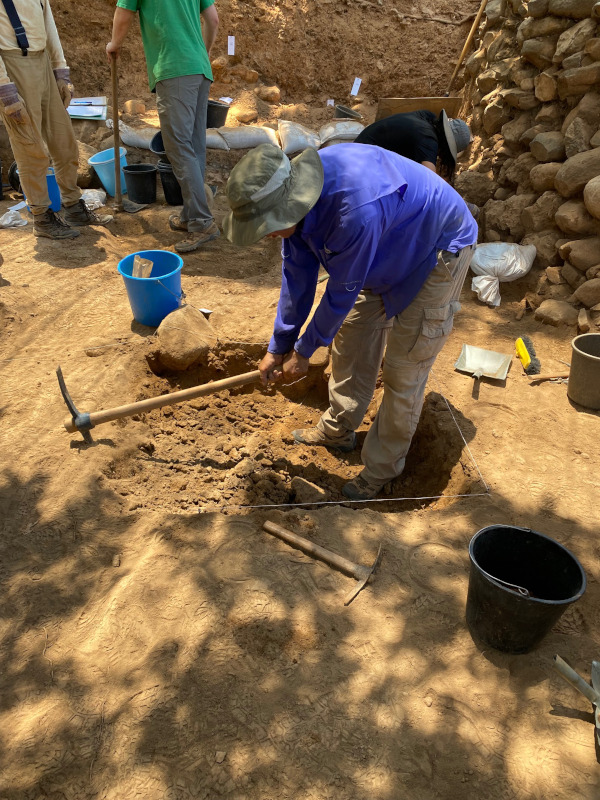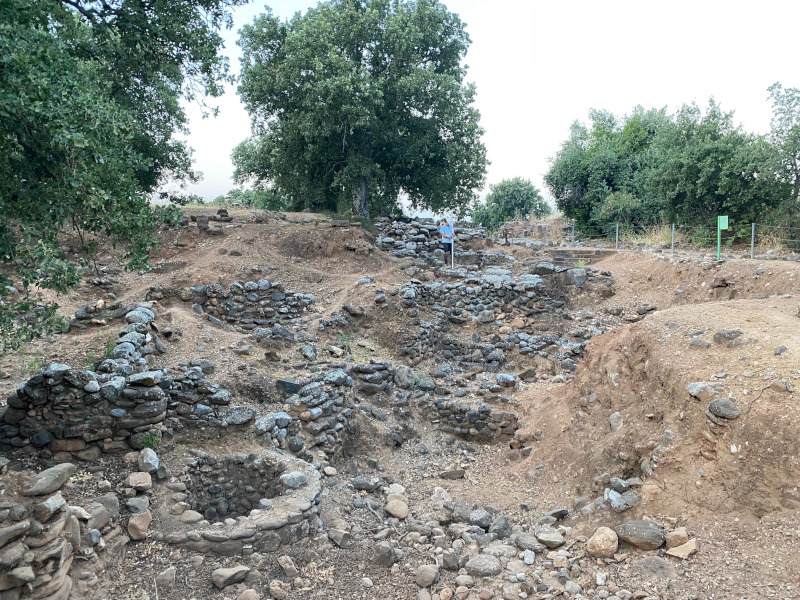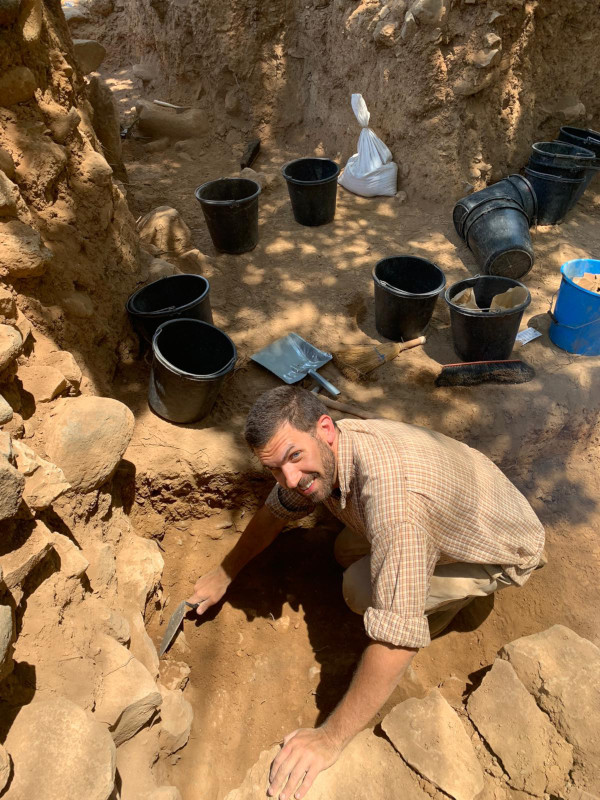
The Final Dig at Dan
David Brown, 2022 Steinmetz Scholarship for Active/Reserve Military or Veterans
As one of three major settlements in the Huleh Valley, Tel Dan occupies a prominent place not only in its well-known biblical association with the settling of the tribe of Dan in Judges 18, but also in the larger regional history. Its geographic location and boast of abundant natural springs have made it an attractive place to occupy from the Early Bronze Age II to the late Roman period. The late Avraham Biran oversaw excavations there from 1966-1999, with David Ilan of Hebrew Union College leading new excavations since 2005. Over this span of time, excavators have revealed some impressive features at the site including a Middle Bronze gate, an Iron II fortification system, a cultic high place, and of course the Tel Dan Stele. The site remains a major tourist attraction for history and archaeology enthusiasts to partake in exploring the vast treasures Israel has to offer
The 2022 season marked the final excavation for Area B—a series of rooms situated directly north of the Iron II fortification system on the southern flank. This area also juxtaposes the interior of the Bronze Age ramparts. A team of students, under the direction of Aaron Burke of the University of California Los Angeles, were assigned three squares in this area. The objectives of this season were to articulate the Iron I strata and reach the terminal Late Bronze phase. Along with students from Hebrew Union College working in Area L, a group totaling forty individuals from around the globe participated in this year’s fieldwork for four weeks covering June-July.
For my part in the excavation, I served as one of three square supervisors in Area B. My Ph.D. research centers on forced migration during the Late Bronze transition to the Iron Age where I seek to identify refugees resettling throughout the southern Levant. As such, this year’s objectives at Tel Dan were fortuitous for my research. We spent our first week removing quite a bit of wash from the area, because no work had been done at the site since 2018. Our second and third weeks were more productive in uncovering various indicators of conflagration including wall collapse, ash, and thick layers of destruction debris. We also analyzed wall interfaces and foundation trenches to better understand the sequencing of phases built up over time. By the fourth week, our area gifted us with a generous reward—pits. We identified them as refuse pits.
Many people consider it strange that archaeologists could be so interested in the garbage of past people, but it is in the trash and the refuse that we can find some of the most valuable information in our reconstruction of ancestral behavior and events. From seeds and botanical analysis to bones and an understanding of diet, from crushed jars to which strata these holes were cut into, I have developed a strong appreciation for the importance of pits and what they contain. Particularly for my research with refugees, who exhibit basic subsistence and storage practices, pits are vital to identifying where refugees settled and what they produced. Needless to say, our efforts this season satisfied a serendipitous end to the Area B excavations.
I look forward to incorporating the data we unearthed at Tel Dan this season into my research and contributing to a better understanding of forced migration, the factors that pushed and pulled people to new regions, and how they reestablished themselves and began to rebuild and rediscover their social identities. I am also grateful to ASOR and to Mr. Charles Steinmetz, the donor for this fellowship, for financially supporting me in my research this season.
David Brown is a Ph.D. candidate in the Department of Near Eastern Languages and Cultures at the University of California Los Angeles. His research is centered on forced migration in the Early Iron Age southern Levant, analyzing how to identify refugees in the material culture according to their push and pull factors as well as how they reconstituted themselves into new social identities after regional changes at the end of the Late Bronze Age transformation.
American Society of Overseas Research
The James F. Strange Center
209 Commerce Street
Alexandria, VA 22314
E-mail: info@asor.org
© 2023 ASOR
All rights reserved.
Images licensed under a Creative Commons Attribution-NonCommercial-ShareAlike 4.0 International License
COVID-19 Update: Please consider making payments or gifts on our secure Online Portal. Please e-mail info@asor.org if you have questions or need help.



